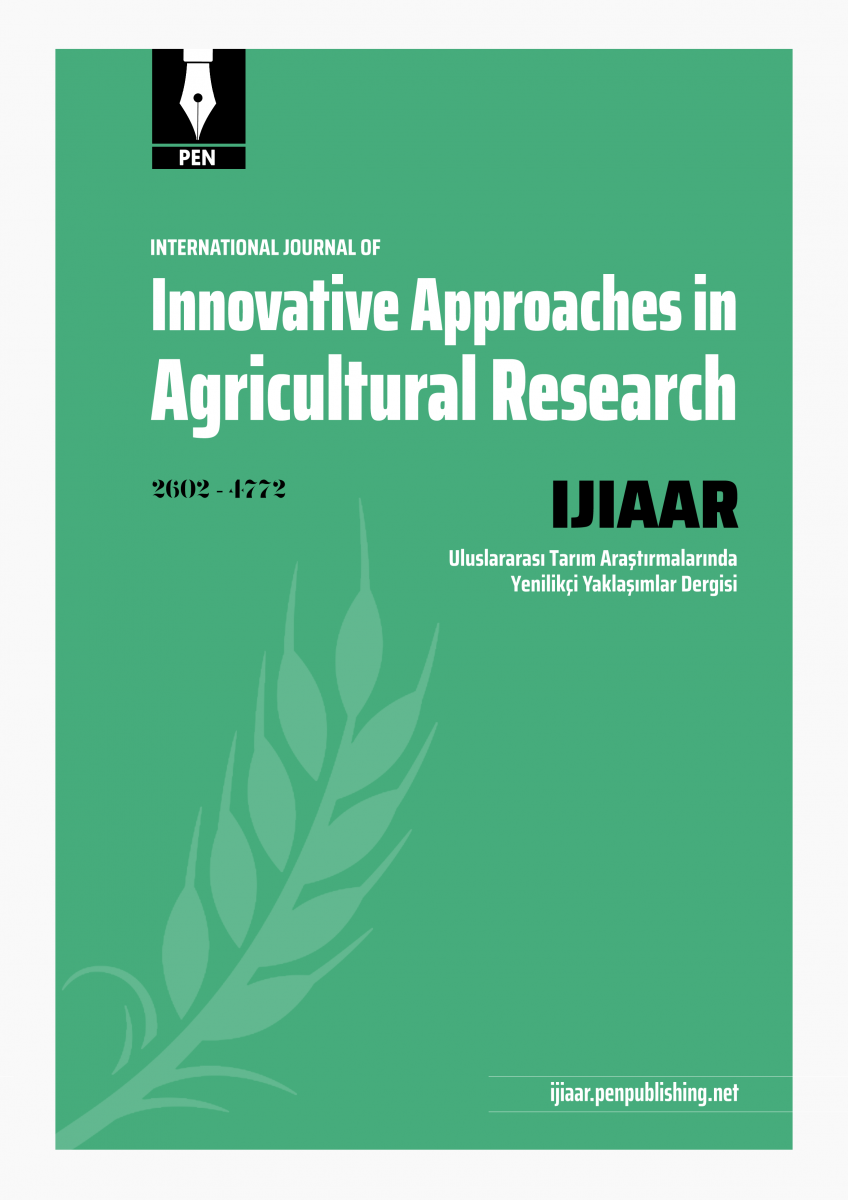Original article | Open Access
International Journal of Innovative Approaches in Agricultural Research 2019, Vol. 3(3) 442-454
Occurrence and Relative Prevalence of Fungal Pathogens on Durum Wheat
pp. 442 - 454 | DOI: https://doi.org/10.29329/ijiaar.2019.206.10
Published online: September 30, 2019 | Number of Views: 75 | Number of Download: 656
Abstract
An assessment of six Bulgarian and six foreign varieties of durum wheat was carried out for the occurrence of foliar diseases caused by fungal pathogens on a natural background. Field experiments were performed at two locations (Chirpan and Sofia) situated in different climatic zones of Bulgaria for six successive growing seasons (2012 – 2017) with exception of 2015 in Chirpan. The results of this research showed that the population of foliar pathogens of durum wheat was heterogeneous and included 13 fungal species. Some differences in symptom severity and relative proportion of the pathogens among varieties and years and between locations were found. Of the leaf spotting fungi, the causal agent of tan spot (Pyrenophora tritici-repentis) was the most prevalent in both prospected areas. The fungi belonging to Septoria leaf blotch complex (Parastagonospora avenae f. sp. triticea, Pa. nodorum and Zymoseptoria tritici) and newly found species Phaeophleospora sp. were more frequently isolated from leaf samples taken in Sofia location. Monographella nivalis and Cladosporium herbarum had contribution to the leaf spotting in both surveyed locations in some of the studied years. Cochliobolus sativus occurred only occasionally. Of the three rust fungi, Puccinia striiformis f. sp. striiformis was the predominant species. The first record of yellow rust was made in 2013. It was the most common disease in both localities in 2014 and 2016 due to warmer winters, which favored the survival of YR. The race analysis performed in Global Rust Reference Center revealed the appearance and distribution of a new race (Warrior) in Bulgaria. The weather conditions were exceptionally favourable for the development of certain diseases in some years. In this relation the influence of some elements of the climate on the pathogen prevalence was discussed. Except the weather other factors like cultivar characteristics, inoculum level, soil type, and predecessor played a role in changing spectrum of phytopathogenic fungi. In common the level of fungal diseases in Sofia region was higher compared to Chirpan. The studied varieties differed in their susceptibility to fungal diseases.
Keywords: Leaf diseases, Septoria leaf blotch, Rust, Phytopathogenic fungi, Weather conditions
| How to Cite this Article |
|---|
|
APA 6th edition Harvard Chicago 16th edition |
| References |
|---|
|

